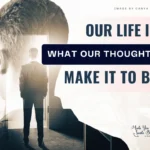“Oh, I don’t have a creative bone in my body. I can’t even fold napkins!”
Mindy grinned as she said this in response to my invitation to a writing workshop. It was a few years ago and, as part of my Master of Fine Arts (MFA) degree program, I had to teach a practicum – an eight-week creative writing class I was offering for free.
I heard many enthusiastic acceptances, and a few “would love to, but …” comments. Mindy, though, was the only one to disqualify herself on the grounds of not being creative.
“Of course you are!” I told her. “Everyone is in some way.”
“Not me,” Mindy replied quickly. “Mrs. Simpson – she taught me in third grade – told me so.” Then she described some elementary school art project that prompted her teacher’s pronouncement. Decades later, Mindy still held onto it as an irrefutable truth.
My intention here isn’t to malign third-grade teachers or to vilify anyone who judged our pipe cleaner sculptures too harshly. But I do think it’s crucial that we acknowledge the chorus of naysayers in our heads – and learn how to stand up to them.
A writer all my life – from scribbling down a first story at age seven to launching my second novel just a few months ago at age 63 – I’ve had to deal with an overactive inner critic. Even now, it tries to dissuade, discourage, and otherwise shut me down. Thankfully, that voice never succeeds.
Here are four steps that keep me tuned into my creativity and can work for you, too.
What’s Your Muse Whispering to You?
Perhaps you have a deep-seated desire to write or create, or maybe you saw something on Pinterest yesterday (it can be a font of inspiration). Whatever the motivation, something has piqued your passion, and you have two choices: ignore it – or go for it. As you can guess, I’m in the second camp.
The first step in encouraging your creativity is paying attention to what speaks to you. Although I’ve dabbled in a few creative pursuits, my true passion is writing, and I think many people are drawn to this form of creative expression.
Has a memory surfaced that you want to capture in words? Do you hear a few lines of a story? Has an image presented itself like a photo in an album? Focus on that invitation and say yes to what really moves you in the creative direction (and no to the naysayers and distractions).
Sign Your Commitment Contract
This step is where that newfound impulse to follow your creativity hits the first major obstacle: How to start? Even though I’ve written for decades – and professionally for more than three of them – I can still get waylaid by any number of doubts and distractions. Is that idea really that good?
That’s why we need to commit – and I’m a big believer in putting it in writing. I have a beautiful notebook given to me by a friend – handmade paper with a leather cover tooled in a floral design shaped like a heart. This is where I write down my commitments to start and finish my next book, my marketing plan for it, and every other step to bring my dream to fruition.
Find that notebook for yourself (even a spiralbound one will do just fine) and write down your initial ideaand your commitment. Still need convincing? Here’s what the Columbus (Ohio) Museum of Art had to say about it: “As with any resolution, it is a deep commitment that will compel and propel change.”
Make a First Attempt
An initial draft – that’s all it is, and without the judgment of our inner Mrs. Simpson leaning over our shoulders. No expectation for perfection, that’s unrealistic and unnecessary pressure. Personally, I like to write out my idea just to get a first draft down. Then – and only then – do I take a closer look.
Multiple books, a New York Times bestseller, two mystery novels in my Ohnita Harbor Mystery Series, and some short story awards later, I still throw out more than I keep. And that’s okay because this is only an initial attempt – what Annie Lamont in her classic Bird by Bird called “sh***y first drafts” (only she didn’t use the asterisks), which maybe produce one really good sentence – and that’s enough to keep you going.
It’s the Nth Draft That’s Worth Keeping
You may love what you produced or feel disappointed by it (my first drafts usually end up somewhere in the middle). But my favorite saying is “art is in the rewrite.” It’s the second, third, twelfth, or twentieth draft that sets the plot in motion, animates characters into believability, and paints a setting you could just step into. That’s the writing process – and also the joy and reward.
Does it take time? Yes. Does it require more effort than you initially thought? Probably. But you are creative, and your expression is worth it.
Mindy never came to my class – even though it was free and just a few blocks from her house. “Maybe next time,” she always told me, and I stay optimistic where she is concerned because Mindy took an important step the day of our conversation, years ago. She told me what Mrs. Simpson had said, probably knowing that I’d refute it by telling her: “Your third-grade teacher was wrong.”
Let’s Have a Conversation:
Has someone proclaimed you “not creative”? Have you taken this as pure truth? How has such a proclamation affected your life? Have you decided to break free and try your hand at something creative? What did you try? What were the results?




